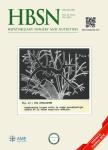Bad neighborhoods:apoptotic and necroptotic microenvironments determine liver cancer subtypes
作者机构:Institut fur ImmunologieChristian-Albrechts-Universitat zu KielKielGermany
出 版 物:《Hepatobiliary Surgery and Nutrition》 (肝胆外科与营养(英文))
年 卷 期:2019年第8卷第4期
页 面:404-406页
核心收录:
学科分类:1002[医学-临床医学] 100214[医学-肿瘤学] 10[医学]
基 金:Work in the laboratory of D Adam is supported by the Deutsche Forschungsgemeinschaft(DFG German Research Foundation)—Projektnummer 125440785–SFB 877 Project B2
主 题:cancer inflammation neighborhood
摘 要:Cancer and cell death are inextricably intertwined. Impaired cell death is a prerequisite for cancer development, and artificial induction of cell death is a key strategy in cancer therapy. At present, clinical approaches to kill tumor cells mostly rely on the induction of apoptosis. For many years, apoptosis has been regarded as the only physiologic form of cell suicide. However, over the last two decades, it has become clear that alternative forms of regulated cell death exist which operate via distinct molecular mechanisms. Therefore, these novel forms of non-apoptotic cell death represent putative therapeutic options to overcome apoptosis resistance of cancer cells, potentially paving the way to more effective tumor therapies (1-3). Representing the currently best studied form of non-apoptotic cell death, necroptosis is elicited by triggers such as death receptors, toll like receptors (TLR) or sensors for intracellular nucleic acids (1,4,5). Their signals converge on the phosphorylation/activation of receptor-interacting serine/threonine protein kinase 3 (RIPK3). Phosphorylation of mixed-lineage kinase domain-like (MLKL) by RIPK3 results in oligomerization and membrane translocation of MLKL and subsequent rupture of the plasma membrane. The release of damage-associated molecular patterns (DAMPs) from the bursting necroptotic cells then promotes inflammation and activation of the innate and adaptive immune response (4-6).



